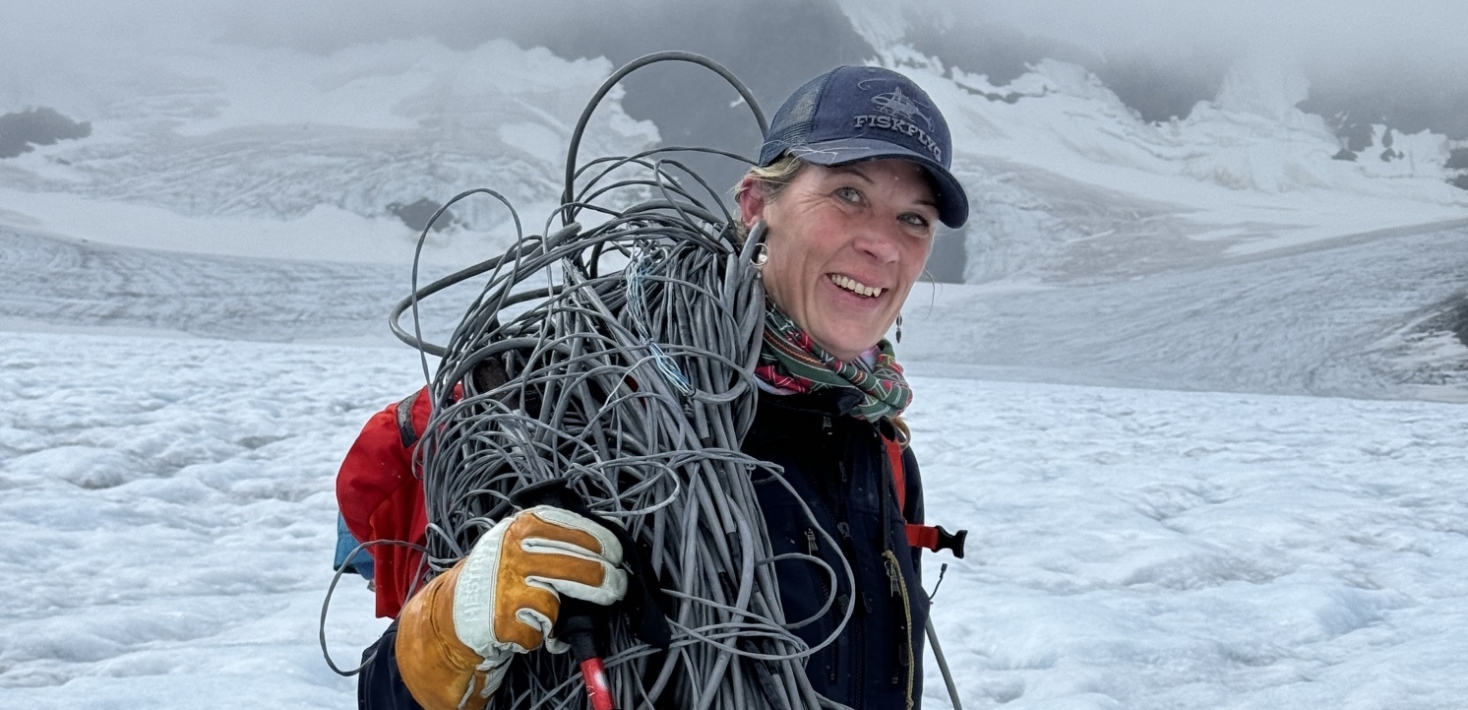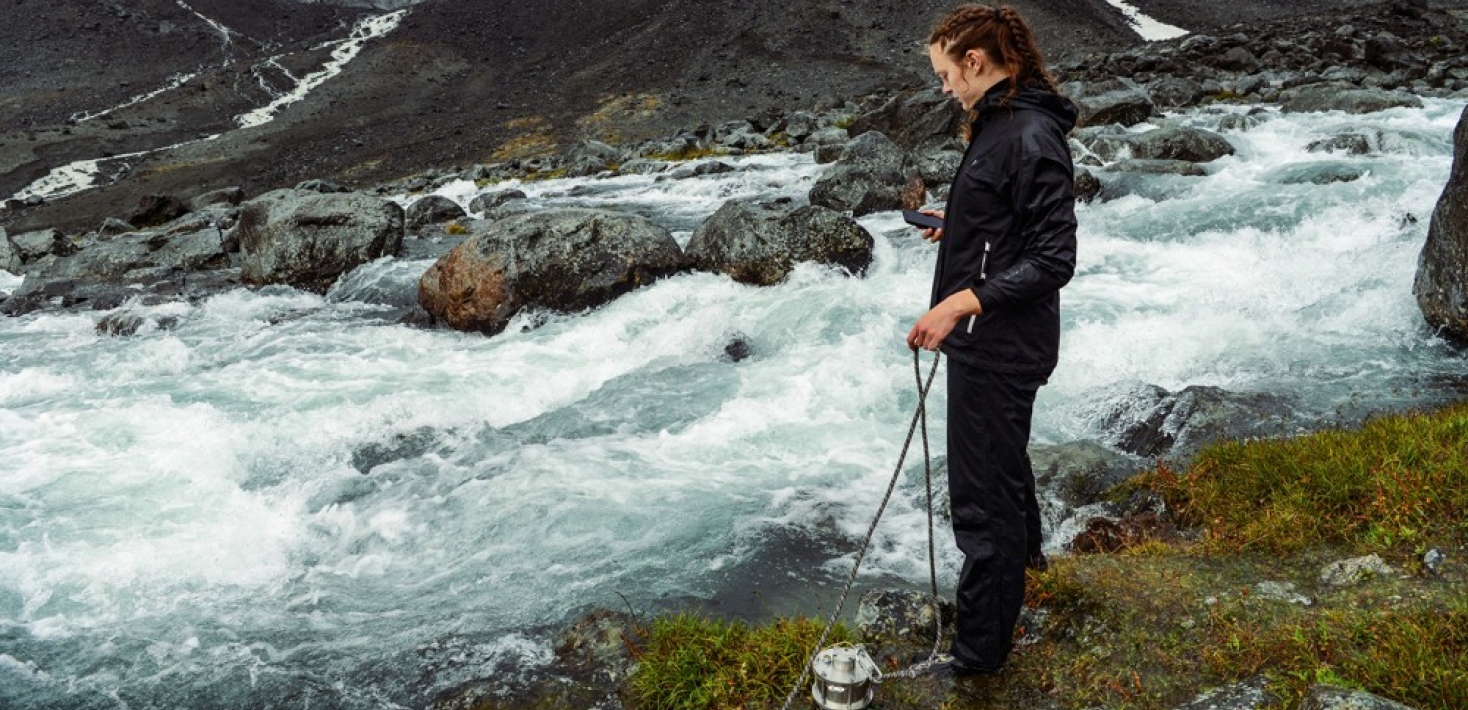SU researchers keep monitoring glaciers as UN puts a spotlight on the need to preserve them

The Earth's glaciers are an important part of the climate system and have existed for many long periods in the Earth's history. They form when the snow remains in place longer than it melts. As for the Swedish glaciers, they are about 6.000 - 8.000 years old, with periods of both growing and shrinking during that time. But the trend now is their shrinking.
When the glaciers melt, the waters around them turn greenish turquoise from their sediments. The streams normally turn this colour every summer. But the seasons are not what they used to be and melting can happen earlier and last longer than a few decades ago.
Everyone knows that ice melts at zero degrees Celsius. And if it gets too warm, the glaciers melt! Recently, this green colouring of the water has been seen very early in the season, and very late. This shows that the glaciers are melting for a much longer part of the year than before. You don't need sophisticated instruments to see that. People who live here can see that things are no longer like they used to be,” says Nina Kirchner, professor of glaciology at Stockholm University and director of the Tarfala Research Station.
The scientist notes that there are major changes in the seasons, in terms of both intensity and timing. The balance of the larger system has been disrupted by rapid warming and massive glacial melting, which can happen at any time nowadays.
At the research station, scientists already get reports from their Sámi partners, of rain in winter and hard crusty snow that the reindeer can't scrape off to get to the lichens, and of lichens rotting in the moisture from the rain. Winter is no longer winter.
What happens when glaciers melt?
Melting glaciers affect animals and plants in the surrounding area. Water flows change and ecosystems downstream from the glacier are affected by the large and rapid transformations. Glaciers also act as water reservoirs, and their disappearance affects water supplies.
In Sweden streams disappear for mountain hikers, plants and animals. Countries with droughts, for example around the Himalayas, depend on the reservoirs for their water supply.
It is very difficult to speculate exactly what will happen, as we have no comparison with previous periods, because there has never before been a period when the glaciers melted so quickly. Society needs to prepare itself", Nina Kirchner concludes.

The first measurements on the Storglaciären Glacier at Tarfala were made in 1945. It started as basic research into the relationship between glaciers and climate. The mass balance of the glacier has been measured since then - how much snow is accumulated during the winter and how much of that melts away in summer - and how all this is linked to precipitation and temperature changes.
Over time, the link between the climate and glacier movement has been established through the annual measurements. The researchers at Tarfala both work out in the field and with data processing.
Working as a Glacier scientist
In winter, fieldwork can involve taking a scooter out to Storglaciären, with drilling equipment, probes, measuring instruments and GPSs, to manually measure the thickness of the snow. They also check the so-called ablation stakes, six-meter-long aluminium poles, which were drilled into the ice the previous summer. If the poles are already sticking up above the ice surface, they need to be re-drilled for the following summer. It is important that the poles remain in place so that future melting can be clearly monitored by measuring how much of the poles protrude from the ice. The measurements are always made at the same locations.
It is a physically demanding job. But it can also be emotionally stressful when the measurements indicate very rapidly melting.
Eight out of ten glaciers in Sweden are expected to shrink significantly or disappear completely within 75 years unless we mitigate climate change. Nina Kirchner sees it as a very important part of her job to convey awareness of what is happening to the glaciers to everyone who cannot go there and see with their own eyes.
You need to prepare yourself these days to see things you don't want to see. The big difference now compared to earlier in geological history is the rapid rate of melting. A glacier that would normally take several hundred years to melt may soon be gone. We are already seeing the first examples of glaciers disappearing. To preserve what we can, we need to make a shift. It is not possible to preserve glaciers without climate transition,” says Nina Kirchner.
The researcher hopes that the Glacier Year will raise awareness and incentives to do something about preventing the melting and preserving the remaining glaciers.
Latest Highlights:
UNIL PhD students benefit from short-term research mobilities within CIVIS
Interactive tools foster participation and motivation in university students
Renewed Olympic certification for the Salzburg's Sports Centre
Growing vegetables in space might be possible, SUR study reveals
